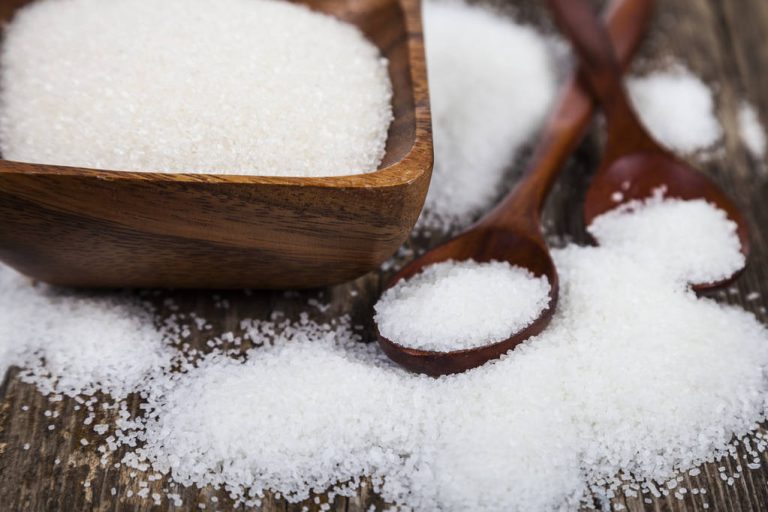Birch sugar (xylitol) is a sweetener that is considered a healthy sugar substitute. We explain what you need to know about the sugar substitute.
Because high sugar consumption can be unhealthy, many people are looking for alternative sweeteners. In addition to sweeteners such as aspartame, you will find sugar substitutes in many sugar-free products. These include birch sugar (xylitol or xylitol). It is chemically related to sugar and is a natural intermediate product of glucose metabolism in the body. Birch sugar is one of the sugar alcohols, the so-called polyols. Despite its structural similarity to sugar, xylitol has different properties. You will learn more about this in the following sections.

Birch sugar: How xylitol is made
Not only we humans produce xylitol in our body – birch sugar or precursors thereof also occur naturally in many plants, not only in birch bark. Some types of fruit and vegetables, such as strawberries, also contain birch sugar.
On an industrial scale, pure xylitol is usually obtained in a complex process from wood or organic waste such as corn cobs or sugar cane fibers:
These vegetable raw materials contain xylans, which are usually extracted at high temperatures using sulfuric acid or caustic soda. This produces xylose, also known as wood sugar (because it is found in many types of wood).
Xylitol is produced from xylose under high pressure and with the use of a catalyst.
Birch sugar: calorie content and uses
Externally, birch sugar does not differ from white sugar. In principle, you can use it in all recipes as a one-to-one sugar substitute – it has the same sweetening power and otherwise behaves very similarly. However, xylitol is less soluble in cold water than sugar. It also has a cooling effect in the mouth and enhances mint and menthol flavors.
While household sugar has 400 kilocalories per 100 grams, xylitol only has 240 kilocalories.
According to the consumer protection initiative, there is no maximum limit for birch sugar in food – you can find it (sometimes under its E number E967) in various products such as:
sugar-free or reduced-sugar sweets and baked goods
Mustard
sauces
sugar free chewing gum
dietary supplements
Undesirable side effects of birch sugar
Products containing more than ten percent birch sugar must be labeled “Excessive consumption may have a laxative effect”. Like other sugar alcohols (e.g. sorbitol or erythritol), large amounts of xylitol can cause flatulence, abdominal pain and diarrhea. A single dose of up to 20 grams and a daily dose of up to 70 grams is well tolerated by most people. However, there is one exception: People who are sensitive to so-called FODMAPs usually do not tolerate xylitol very well, even in small amounts – because polyols are FODMAPs.
Otherwise, the European Food Safety Authority (EFSA) classifies birch sugar as harmless to health.
Caution: Xylitol is highly toxic for dogs, rabbits and some other animals because the substance causes extreme insulin releases in them.
Conclusion: birch sugar in moderation and preferably organic
As part of a balanced diet, there is nothing wrong with using birch sugar in moderation as a sugar substitute. You can get xylitol from organically grown raw materials both online (for example at **Amazon) and in organic shops. So you can be sure that these are free of genetic engineering.



